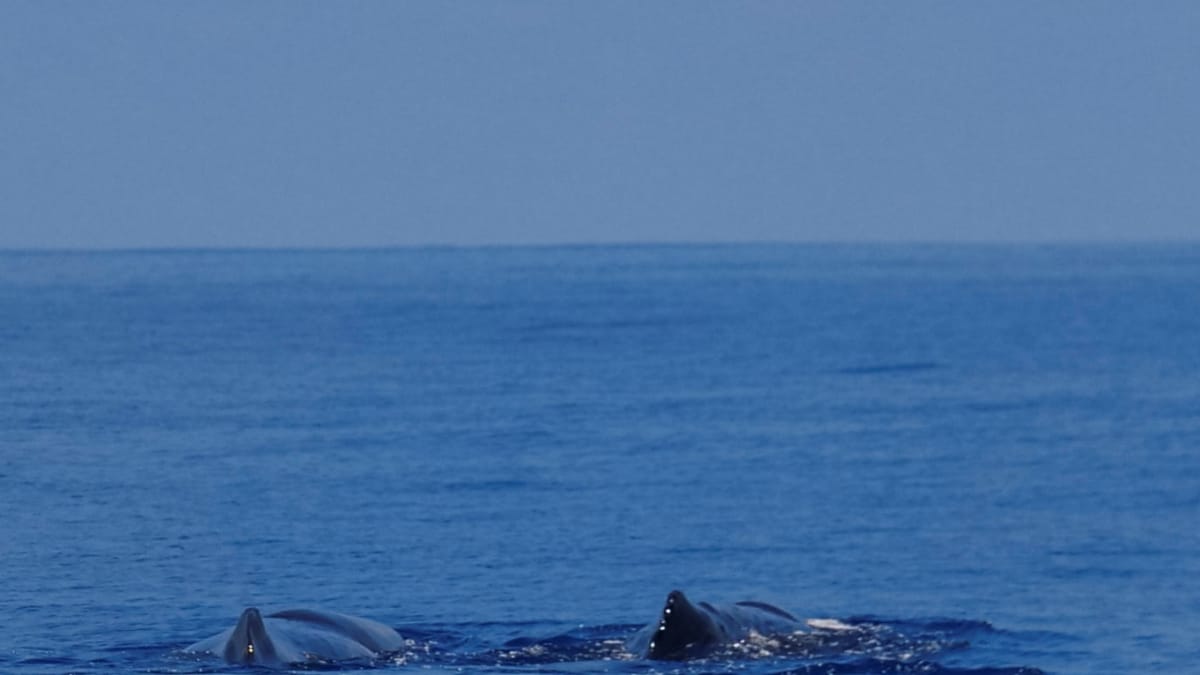Last Updated:
Pune (Poona) [Poona], India

Two sperm whales are seen swimming on the Indian Ocean surface during the Greenpeace’s Arctic Sunrise expedition at the Saya de Malha Bank within the Mascarene Plateau, Mauritius March 14, 2021. (Reuters)
Study warns of severe cyclones, heavy rainfall, and marine heatwaves in Indian Ocean due to warming, impacting coastal livelihoods and marine ecosystems
A recent study has sounded a stark warning about the warming of the Indian Ocean, predicting that it will worsen cyclones, heavy rainfall events, and lead the world’s third-largest water body into a near-permanent heatwave state.
Led by Roxy Mathew Koll of the Indian Institute of Tropical Meteorology in Pune, the study underlines that the Indian Ocean and its surrounding nations are at the highest risk of natural disasters. With 40 countries bordering the ocean, housing a third of the global population, changes in the region’s climate carry significant societal and economic implications.
What does the future Indian Ocean look like?1/ The warming in the Indian Ocean was strongest during the last seven decades, at a rate of 1.2°C per century.
This is dwarfed by the projected warming of 3.8°C per century in the future, if emissions continue at the current rate. pic.twitter.com/9w9VK0l6mG
— Roxy Koll ⛈ (@RockSea) April 28, 2024
The most severe impacts are anticipated in and around India due to the highest rise in seawater temperatures occurring in the Northwestern Indian Ocean, including the Arabian Sea. Published by Elsevier, the study warns of a shift in the seasonal cycle of surface temperatures, potentially resulting in more extreme weather events across the Indo-Pacific region.
Between 1980 and 2020, the Indian Ocean’s temperatures ranged from 26 to 28 degrees Celsius throughout the year. Under a high-emission scenario, even the minimum temperature by the end of the century is projected to surpass 28 degrees Celsius. Extreme cyclones and heavy rainfall events, which have already increased since the 1950s, are expected to further escalate.
Marine heatwaves, characterised by periods of exceptionally high ocean temperatures, are forecasted to surge over tenfold, potentially pushing the tropical Indian Ocean into a “near-permanent heatwave state.” These heatwaves not only intensify cyclones rapidly but also trigger coral bleaching and the destruction of marine habitats, posing a significant threat to the fisheries sector.
Roxy Koll, the lead author, stressed the urgency of addressing these challenges, stating, “It is crucial to recognise that the impacts of these changes are not distant concerns for our grandchildren and future generations alone. As the current generation, we are already witnessing the repercussions firsthand.”
The study also underlines the potential impact on the Indian Ocean Dipole, a climate pattern affecting the monsoon and cyclone formation. It predicts a 66% increase in extreme dipole events by the end of the century, potentially affecting monsoon-dependent countries like India.
The rate of warming in the Indian Ocean is alarming, with a projection of 1.7 to 3.8 degrees Celsius increase by 2100, compared to 1.2 degrees Celsius per century between 1950 and 2020. This warming extends to a depth of 2,000 meters, contributing to a rise in sea levels and ocean acidification.
Thomas Frolicher, one of the authors, stressed the need for immediate action, stating, “The Indian Ocean, a climate change hotspot, faces rapid and strong increases in marine heatwave frequency and intensity unless global CO2 emissions are substantially cut.”
Check Lok Sabha Election 2024 Phase 3 Schedule, Key Candidates And Constituencies At News18 Website.

